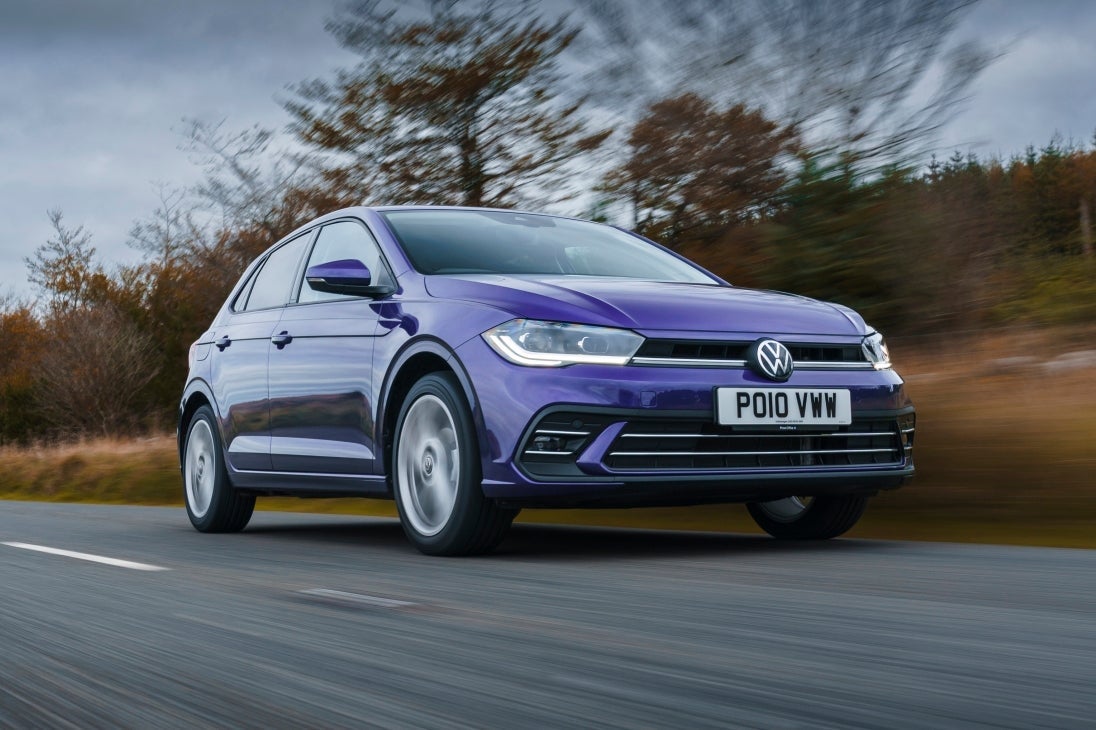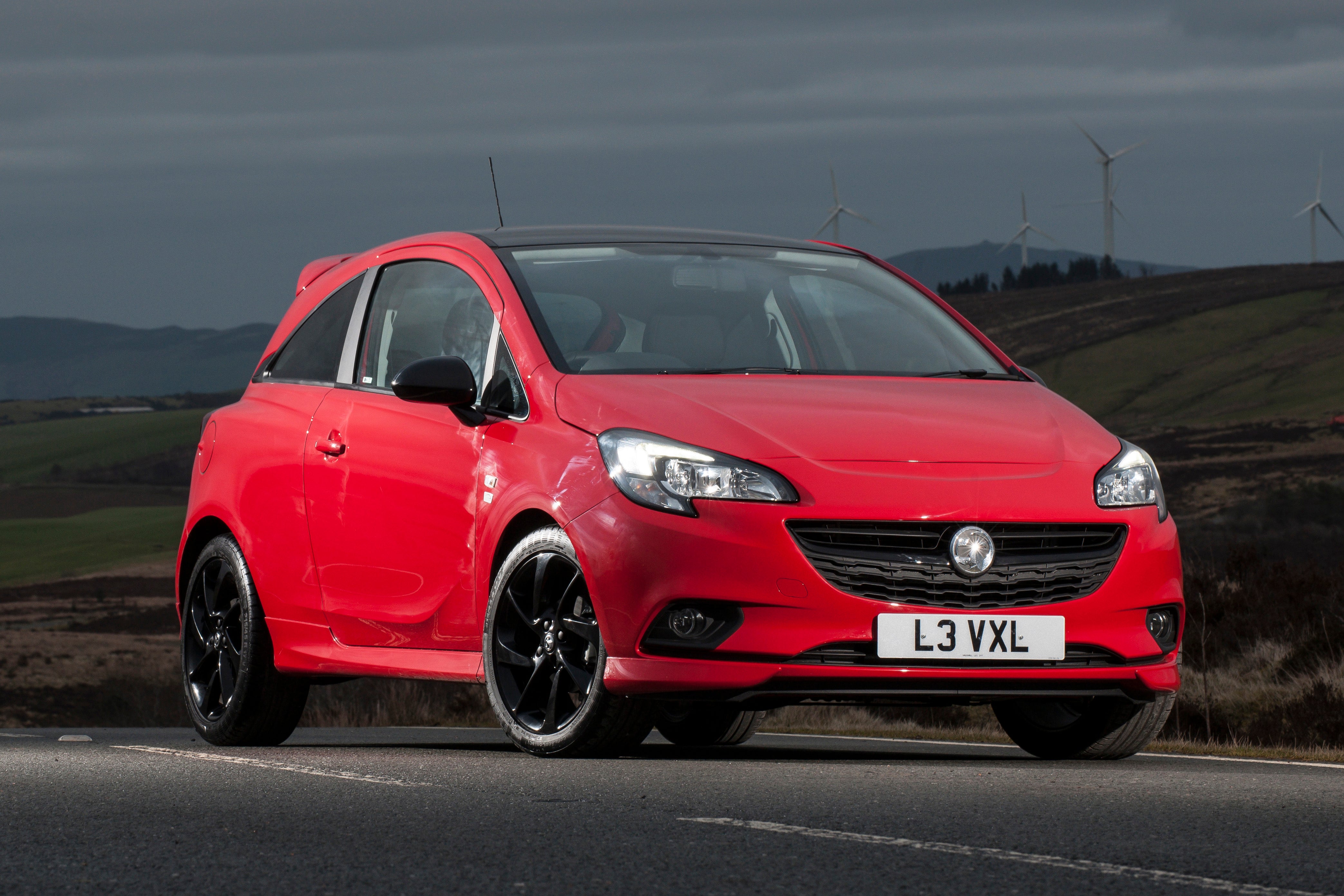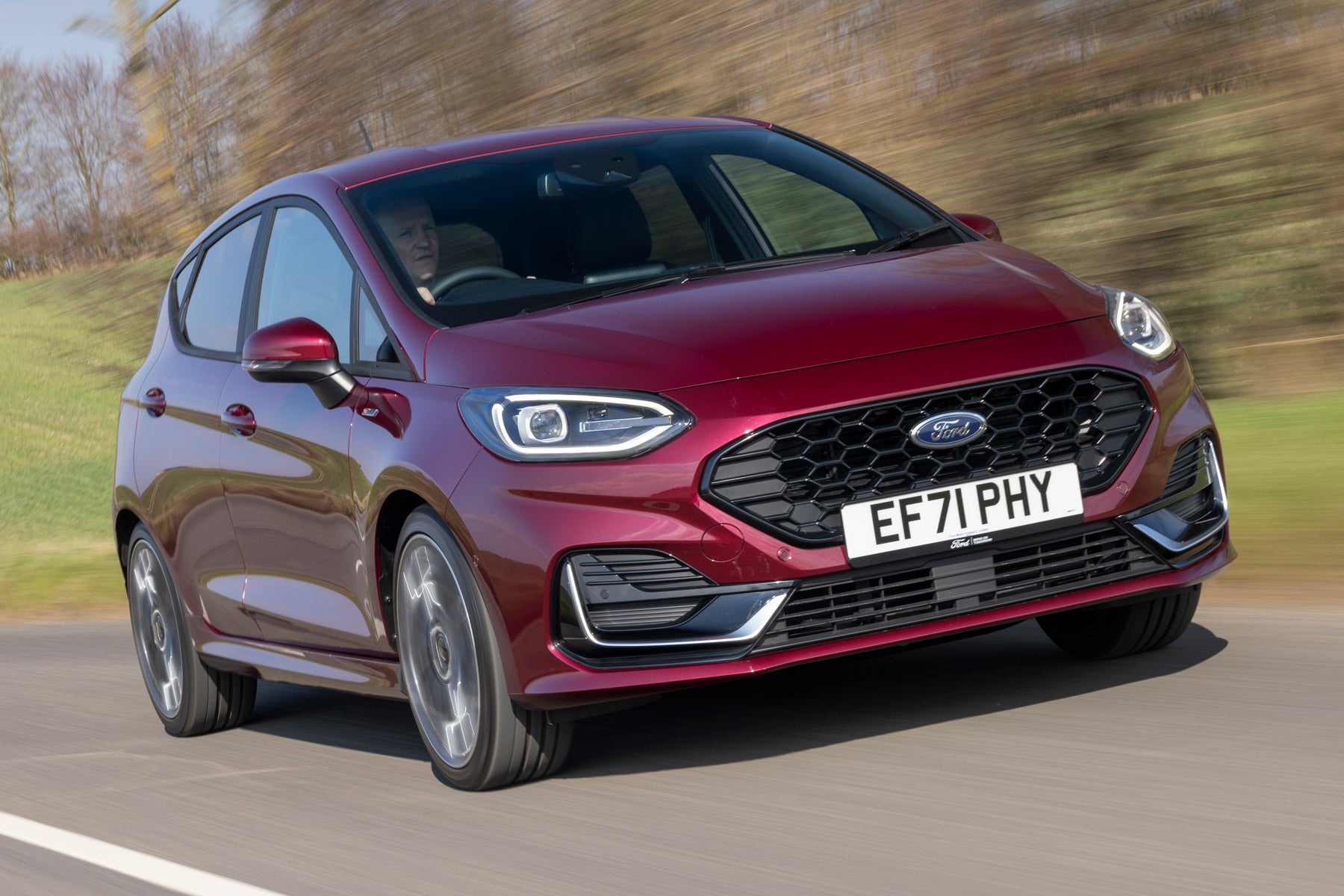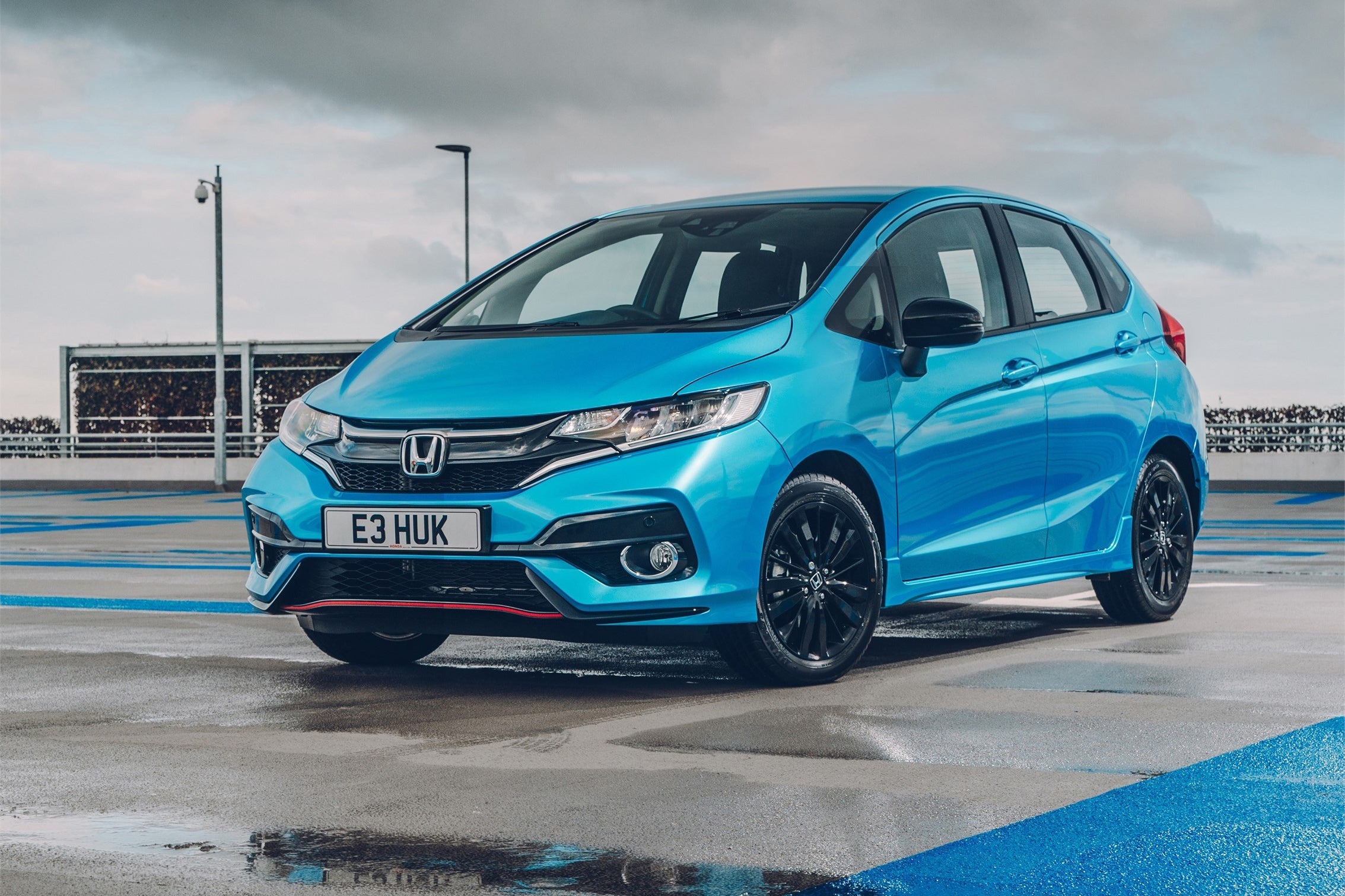Skoda Fabia Estate (2015-2021) Review
Written by Andrew Brady
Quick overview
Pros
- Vast boot space
- Top drawer quality
- Refined driving manners
Cons
- Short on driving excitement
- Limited engine choice
- Sparse kit on base model
Overall verdict on the Skoda Fabia Estate
"In this Skoda Fabia Estate review we are looking at a car that possibly explains the brilliance of the brand better than any other. Small estate cars are absolutely not fashionable - hatchbacks and SUVs/crossovers are the pick of the fashionistas - but what could be more sensible than a small car with a big boot? Not everyone needs a car like this of course, but those who do will find the Skoda Fabia Estate to be hugely practical, sensible, efficient and a pleasure to live with."
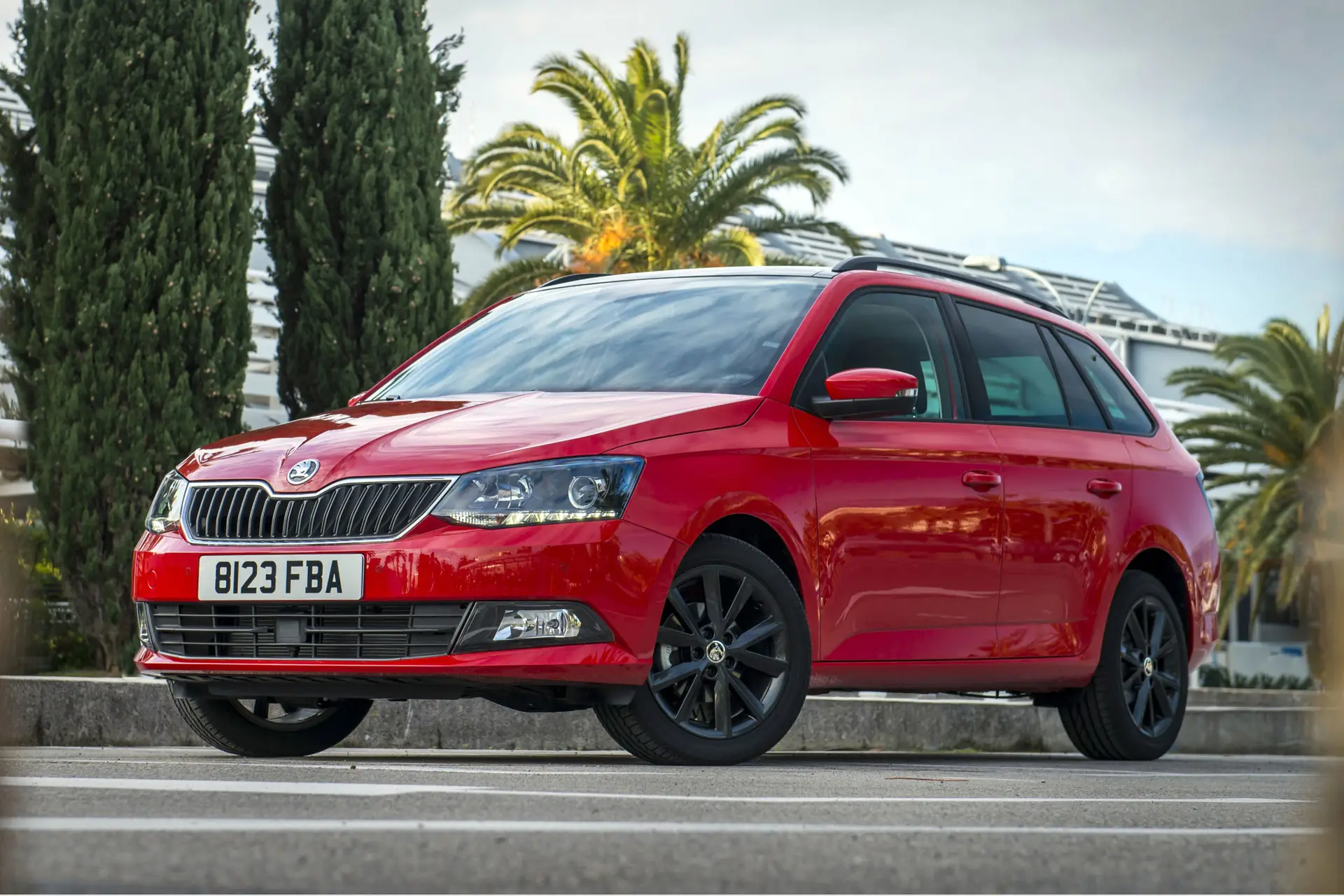
On top of this, the Skoda Fabia Estate does practicality like no other in its, admittedly niche, sector of small hatch-based estates. Lift up the tailgate and you’re presented with a huge boot of 530-litres with the rear seats still upright and in use. That’s getting on for executive estate dimensions. Tumble them down and the Skoda Fabia has 1395-litres to play with.
As well as all this space, Skoda makes it easy to use thanks to a low loading sill height and boot sides that are free from interruptions that might snag a bigger bit of cargo as it’s slid into or out of the car. The optional variable height floor is well worth it if you can find a car with it, as it means the base of the luggage bay is all at one level, again making it less hassle to fit in bulkier items with the rear seats tipped forward.
Throughout the rest of the Skoda Fabia Estate, there are all the little touches that make the Skoda such an appealing prospect for anyone who has to live with a car day in, day out. Details such as the large bottle holders in the door pockets and centre console, and even the ice scraper hidden in the fuel filler flap that’s a trademark of the company. It all adds up to a car that fits into your life without asking anything in return
The Skoda Fabia Estate won’t ask much of your finances either thanks to a range of petrol engines that are frugal. They come with a choice of 1.0-litre engines in models from the 2018 facelift forward, or you could have a diesel motor by choosing a used version from when this Skoda Fabia Estate was launched in 2015.
Whichever engine takes your fancy, the Skoda Fabia Estate is very comfortable and glosses it's way over bump-battered roads with calm efficiency. Granted, you won’t feel entertained at the steering wheel of a Skoda Fabia in the way you would with a Ford Fiesta, but the Skoda has chosen comfort and quiet over an overtly sportier feel. Still, it deals with twists, turns, motorways and towns with the same relaxed air of competence.
Such an unpretentious approach doesn’t mean you have to wear a hair shirt when driving the Skoda Fabia Estate. Base versions are quite Spartan in the amount of equipment they come with, but it’s easy to choose a higher grade version and enjoy all of the luxuries you could want in a small estate while also lugging large amounts of cargo.
Looking for a used car for sale? We've got 100s of Skoda Approved Used Cars for Sale for you to choose from, including a wide range of Skoda Fabia Estate cars for sale. If you're looking for the hatchback version, you need our Skoda Fabia review.
Is the Skoda Fabia Estate right for you?
For anyone keen on plastering a smile across your chops at the mere prospect of a gnarly country road, the Skoda Fabia Estate is not going to be your go-to car. While a Ford Fiesta or Renault Clio will deliver the thrills, the Skoda just gets on with delivering the goods thanks to it's huge load area.
This is where the Skoda Fabia Estate excels and why you will buy it. Whether you need to carry the family dog in palatial comfort, pack all the kids’ holiday gear or just cart about plenty of stuff, this Skoda has you sorted.
It’s also very good at covering long distances thanks to good refinement and comfort, though we’d steer clear of the least powerful engines to make the drive easier on your ears. Seat comfort is another plus point, and even if the cabin materials look a bit plain they are hard wearing.
What’s the best Skoda Fabia Estatemodel/engine to choose?
As a wagon that many will cover big mileages in, including company drivers, the diesel-engined Skoda Fabia Estate made a lot of sense when it was available. Used buyers may well take this route, but for newer customers it’s a decision between the two 1.0-litre petrol engines available.
Wisely, Skoda does not offer the 60PS 1.0 MPI non-turbo engine in the Estate as it would just be too sluggish when the Skoda Fabia wagon was loaded up. That leaves you to choose from the 1.0-litre MPI 75PS unit, either of the 1.0-litre TSI options with 95PS or 110PS, the 110PS 1.2 TSI (which comes with the DSG automatic only), or on earlier cars a 1.4-litre TDI in 105PS or 90PS versions. Our preference is the 110PS 1.0-litre TSI petrol as it gives you more in reserve when driving on the motorway.
There’s a range of five trims to select from when buying a Skoda Fabia Estate. We’d skip the S as it’s missing some kit we reckon is essential nowadays and head for the SE that has air conditioning, rear parking sensors and roof rails. Or, if you want something plusher, the SE L has climate control, keyless ignition, and sat-nav with its 6.5-inch infotainment screen.
What other cars are similar to the Skoda Fabia Estate?
The only contender to the Skoda Fabia Estate in the small wagon sector is the Dacia Logan MCV. With engines and running gear lifted from Renault, the Logan MCV is decent to drive but nowhere near as refined as the Skoda and not as refined on longer trips.
Where the Dacia does have the upper hand is it's very low list price and the even bigger load space it provides next to the Skoda. With 573 litres of boot capacity, the Logan MCV is a car for those who really need to pack in the bags.
For other alternatives, you’ll need to look to the used market for the likes of the SEAT Ibiza ST that is practical but not as roomy as the Skoda. Others include Skoda's own Rapid Spaceback.
Comfort and design: Skoda Fabia Estate interior
"The roof line of the Skoda Fabia Estate ensures there’s plenty of headroom for the driver and front passenger. It makes the Skoda Fabia wagon one of the best choices for taller drivers, especially as the seat can be moved for height in all but S trim to get you quite low in the cabin for loftier occupants or raised up to give a good view if you’re shorter."
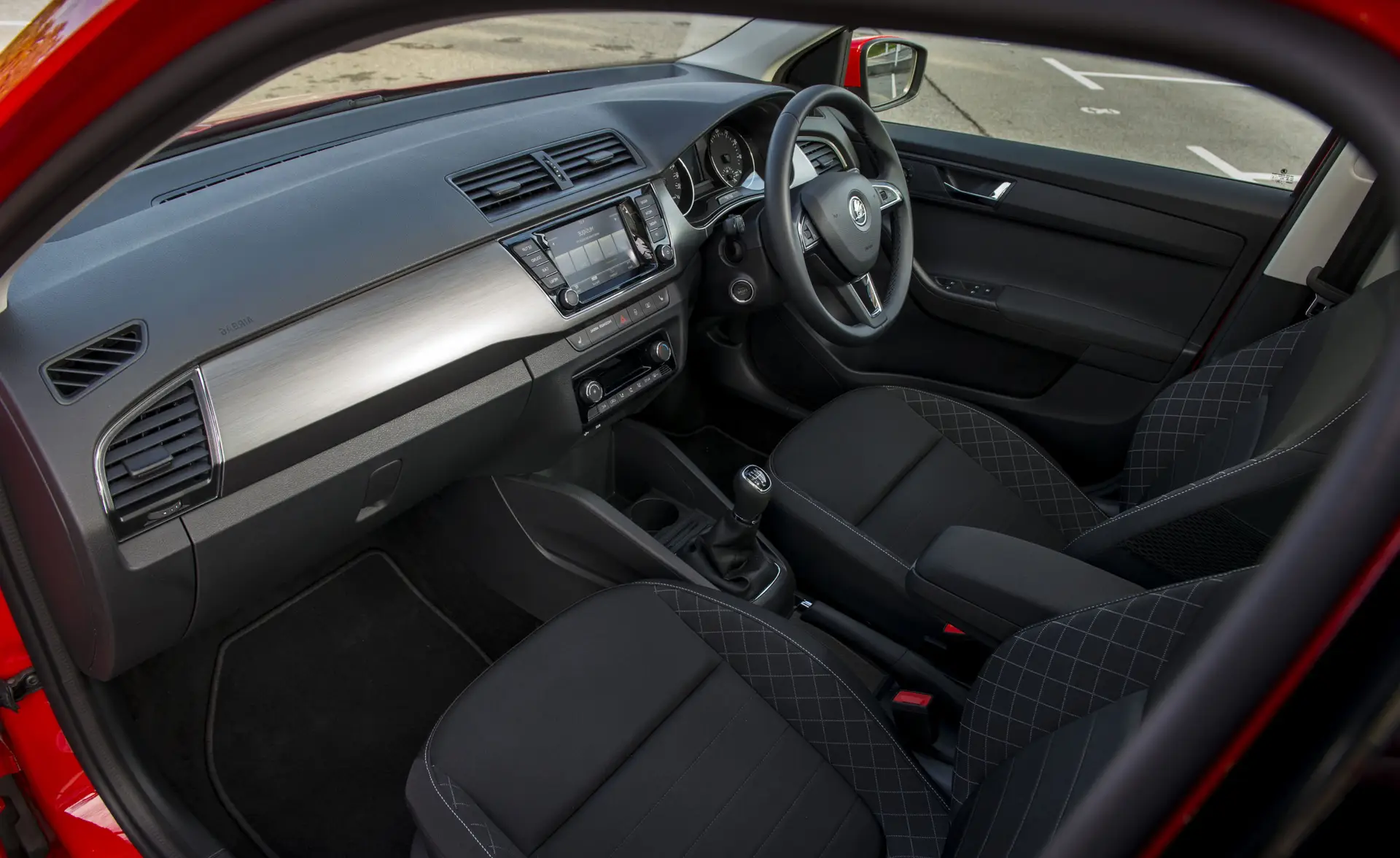
Whatever height you are, the driver of the Skoda Fabia Estate has a good all-round view thanks to the larger than normal glass area of the car. Even glancing over your shoulder to change lane is not hindered by the rear-most pillars, which gives an added sense of security on faster roads.
The driver also has angle and depth adjustment for the steering wheel to help fine tune the seating position. With this done, you’ll be able to see the simple main dash display with two large dials for speed and revs with a digital display in the centre for additional information. Unlike the Skoda’s cousins from Audi, SEAT and Volkswagen, there isn’t the option of a Digital Dash in the main binnacle.
Instead, what you get is a 6.5-inch infotainment screen in the centre console of the dash. With SE Drive and higher trim levels, this includes Amundsen sat-nav. It’s easy to use and the display in the Skoda also has shortcut buttons to the side of the screen to take you to the right menu quickly.
Quality and finish
If you’re a Johnny Cash fan, you’re going to like the Fabia Estate’s cabin as it’s largely decked out in black. This isn’t as unremittingly bleak as it first sounds as there is some variation in the tones and textures of the materials used to give some relief. You can also have the central band across the dash in a lighter colour to help break up the darkness, while the Monte Carlo version has some splashes of colour in its seat fabric to brighten things up.
Such a sombre approach would be tough to accept if it wasn’t for the Skoda’s excellent build quality. As we’ve come to expect from the Czech manufacturer, it may not do flash, but it does solid very well. A few touches of colour or chrome would make the Skoda Fabia’s interior a more welcoming environment, but it’s certainly robustly built.
This also applies to the boot space, where the carpet and finish majors on function over form. However, you won’t mind this when it’s easy to keep clean and doesn’t show every little scuff or scrape from loading in the dogs, kids and bags.
Infotainment: Touchscreen, USB, nav and stereo in the Skoda Fabia Estate
Each and every Skoda Fabia Estate comes with Skoda’s 6.5-inch infotainment touchscreen. In the base S model, it’s the simpler Swing radio version and the two rotary buttons either side feel a little flimsy in use. However, the shortcut buttons on either side of the display work with a solid precision and take you to the required menu very easily.
The system comes with DAB radio, Bluetooth, and USB and SD card ports. In the SE model, this is upgraded with Skoda’s Smartlink+ to make it easy to access apps from your smartphone. It also lets you access music through Apple CarPlay and Android Auto.
Choose the SE Drive or higher trim versions of the Skoda Fabia Estate and you get the Amundsen version of the infotainment. It comes with sat-nav included and one year’s internet access from new. It’s an easy system to get to grips with thanks to clear menus and big onscreen icons that make them clear and simple to select when driving. It may not be as whizz-bang when it comes to features, but we’d take the Skoda’s ease of use every time.
Space and practicality: Skoda Fabia Estate boot space
When it comes to fitting in luggage, there isn’t a small estate to touch the Skoda Fabia Estate. Of course, it helps that this is a wagon where all of it's main rivals are hatches just like the Skoda Fabia hatch, but let’s not split hairs on this point.
Instead, let’s look at how much space there is in the Skoda Fabia Estate. With the tailgate swung open, you have a large, wide opening to access the boot through and the load sill is a good deal lower than in most small estates. Inside, there’s 530 litres of carrying capacity and this isn’t an exercise in measuring every nook and cranny to get to that figure, it really is a massive load bay with sides that are unaffected by the wheel arches.
Either side of the main load floor are storage cubbies set into the space between the rear of the car and the wheel arches. They are ideal for keeping all of those smaller items that would otherwise rattle around free in the boot. Skoda also supplies it's simple plastic holder that slots into the side of the boot wall to keep bottles upright.
The floor itself has a shelf you can use to vary the height of the cargo base. In it's higher position, it creates a space underneath to stash valuable items from passers-by. In this setting, it also creates a flush floor with the back seats when they are tumbled forwards that frees up as much as 1395 litres. They are split 60/40 to give you the option of varying people carrying with load duties.
When it comes to the rear occupants, they have plenty of space for legs, heads and shoulders, so you can have a pair of adults in here in ample comfort. Three children will fit across the bench and each has a three-point seat belt. Skoda also fits a pair of ISOFIX child seat mounts on the outer pews, which have great access through the wide-opening back doors to round off the Skoda Fabia Estate’s excellent credentials as a practical wagon.
The Skoda Fabia Estate dimensions are 4257mm long, 1958mm wide and 1467mm tall.
Handling and ride quality: What is the Skoda Fabia Estate like to drive?
"Where most small cars aim to deliver a modicum of sporting prowess, the Skoda Fabia Estate more than happily goes in its own direction to favour comfort above all else. It’s a good way to be as most people choosing this compact wagon will value a supple ride over the last word in handling finesse."
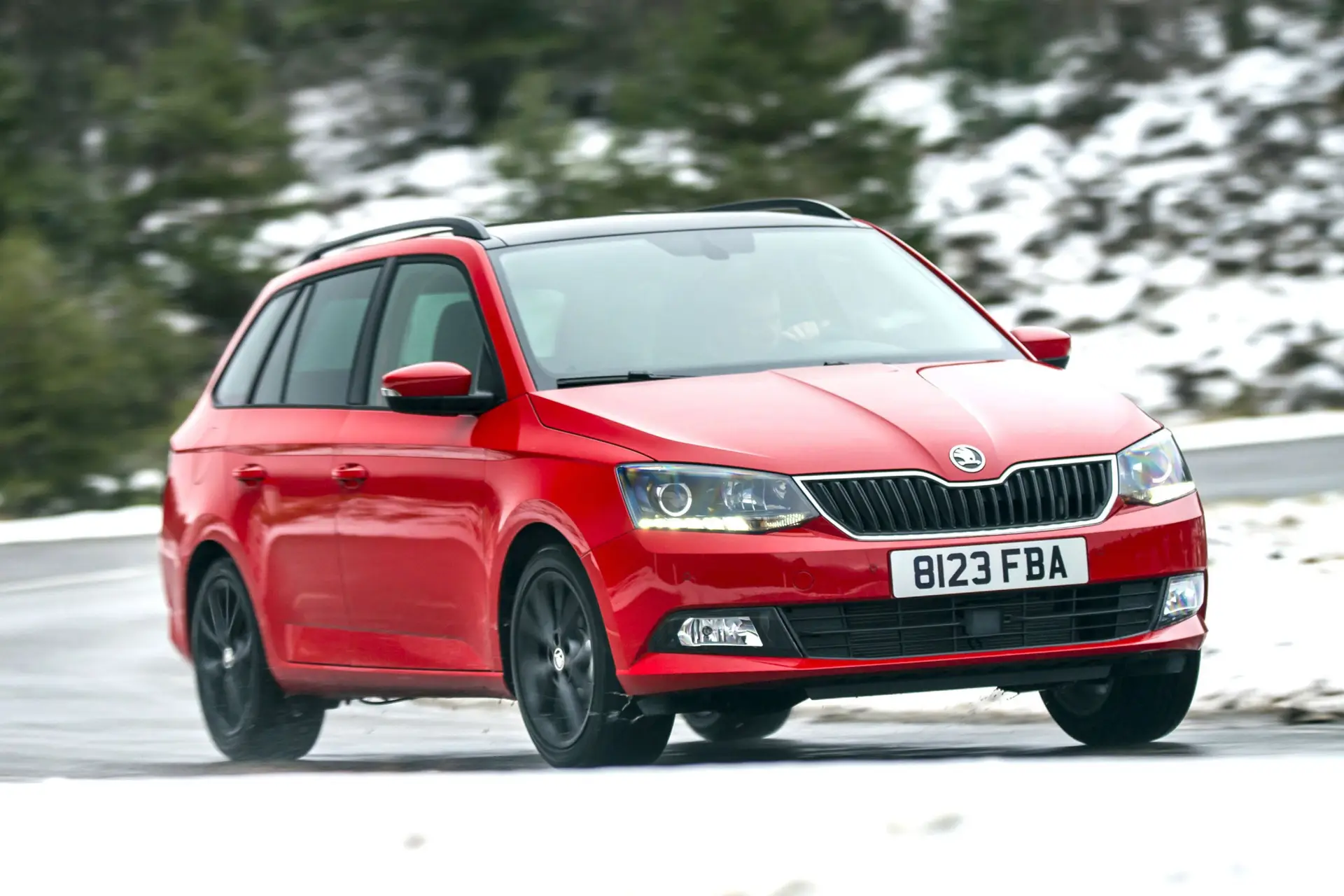
This is not to say the Skoda Fabia Estate doesn’t want to go round corners. Far from it, and the Estate makes the most of its available grip to thread its way into and out of bends in a very controlled, composed manner. The steering is light and gives a good feel for what the front wheels are up to, while the brakes are strong and consistent in their actions.
All of this makes the Skoda Fabia Estate much more fun to drive than you might at first suspect. Even so, it is still primarily the comfort of its ride that leaves the longest lasting impression. Choose the models on smaller wheels and the Skoda is especially good at dealing with the humps and bumps of most roads. Even the Monte Carlo model on its larger wheels still rides with a settled sureness that leaves the driver and passengers largely oblivious to how poor the road’s surface is.
In town, there is a slight firmness to the ride when you encounter sharper edges such as road joints or badly repaired potholes, but at higher speeds this translates to excellent control. Even when the Skoda Fabia Estate is fully loaded with people and luggage, it remains stable and happy to cruise all day at the maximum speed limit. Should you need to change direction in a hurry to avoid a hazard, the Skoda also resists body lean impressively to give the driver full confidence and control.
What engines and gearboxes are available in the Skoda Fabia Estate?
The basic 1.0-litre non-turbocharged MPI engine offers 75PS, and although it is willing it struggles outside of town driving or if you decide to load up with passengers or luggage. We'd skip it unless you're looking for the cheapest Skoda Fabia Estate possible - this engine is only available on lower grades.
The 1.0-litre turbocharged TSI 95PS motor comes with a five-speed manual gearbox as its only transmission choice. It takes 10.8 seconds to get from a standing start to 62mph if driven as hard as possible, which seems acceptable on paper. On the road, this isn’t the case and the 95PS engine always feels just a little too slow, especially on the motorway.
Much of this comes down to the five-speed gearbox asking the engine to be more flexible than it can offer. We also find the shift action of the five-speeder is not quite as smooth and easy as the six-gear transmission used as the sole option for the 110PS turbo petrol.
Aside from the better gear change of the six-speeder, it has a better spread of ratios to provide the right one for any circumstance. Add in the extra power and low-down shove of the 110PS version of the three-cylinder engine and it’s a winning combination for us.
This is borne out by acceleration figures that have the 110PS Skoda Fabia Estate going from 0-62mph in 9.7 seconds, and that 1.1 second difference has a big impact on how relaxed the Skoda Fabia Estate is when pulling out of junctions or joining faster flowing traffic. It’s also a useful extra slug of power when the car is weighed down with passengers and their bags. And given there’s barely any detrimental effect on fuel economy or emissions by choosing the more powerful engine, it is by far the most sensible choice in the Skoda Fabia Estate.
If you must have diesel then the more powerful 105PS 1.4-litre TDI is the one to go for, and although it's a little noisy in a car this small, it does offer lots of pulling power and impressive fuel consumption.
Refinement and noise levels
Three-cylinder turbo petrol engines are the norm in small cars and the offerings in the Skoda Fabia Estate are as good as most. They don’t have quite the same smooth power delivery as the Ford Fiesta’s, but you will find they are well mannered and quiet at town speeds and when cruising along multi-lane roads at the legal limit.
Work the engines a bit harder, such as when driving up a steep hill, and the three-cylinder engines can become a little gruff and vocal. It’s not an unbearable noise, but you will feel a little vibration though the steering wheel, pedals and gear lever.
It's a similar story in the diesel options, although there is a bit more clatter at idle. Once up to speed they don't intrude too much, but ultimately the petrol alternatives are best for low noise levels.
In every other way, Skoda has carried out a thorough job of distancing the Skoda Fabia’s cabin from wind and road noise. Even with the roof rails fitted as standard to all but the S model, there’s very little whistle or rustle from the breeze as it passes over the car at higher speeds. You will also find the Skoda Fabia Estate isolates the interior very well from roar from the tyres, even in those versions that ride on bigger wheels.
Safety equipment: How safe is the Skoda Fabia Estate?
Skoda is one of the few small estate makers to fit autonomous emergency braking as standard to its cars, including the Skoda Fabia Estate. Called Front Assist, it detects potential hazards in the road ahead and warns the driver with audio and visual alerts. If the driver doesn’t react, the car will apply the full force of the brakes to bring it to a safe stop or minimise the impact of a collision.
The Skoda Fabia Estate also comes with twin front, side and curtain airbags as standard across the range, as well as three-point seat belts and headrests for four occupants, but you have to pay extra for the same for the middle rear passenger. All models have two ISOFIX child seat mounts to securely hold kiddy seats in the back. There’s also ESP stability and traction control, and ABS anti-lock brakes.
Euro NCAP tests awarded the Skoda Fabia a five-star mark, with 81 per cent scores for adult and child occupant safety. You can make the Skoda Fabia Estate even safer with a number of options that includes Hill Hold Control to stop the car rolling back when pulling away on inclines and upgrading from drum brakes to discs at the rear.
Other optional safety equipment is offered with the Driver Fatigue Assistant to spot and warn if the driver is due a break. Rear parking sensors are offered for the S, but standard on other models, while the SE Drive has front parking sensors included rather than being an option on the rest of the range.
MPG and fuel costs: What does the Skoda Fabia Estate cost to run?
"Choose either of the 1.0 TSI turbo petrol engines for the Skoda Fabia Estate in S trim and both the 95- and 110PS motor returned an average consumption of 52.3mpg during WLTP testing. Even the least economical versions of the Skoda Fabia Estate still provide official figures of 50.4- and 49.6mpg for the 95PS and 110PS models. Look at Real MPG figures and the 95PS motor can offer 52.8mpg, while the 110PS unit gives 51.0mpg."
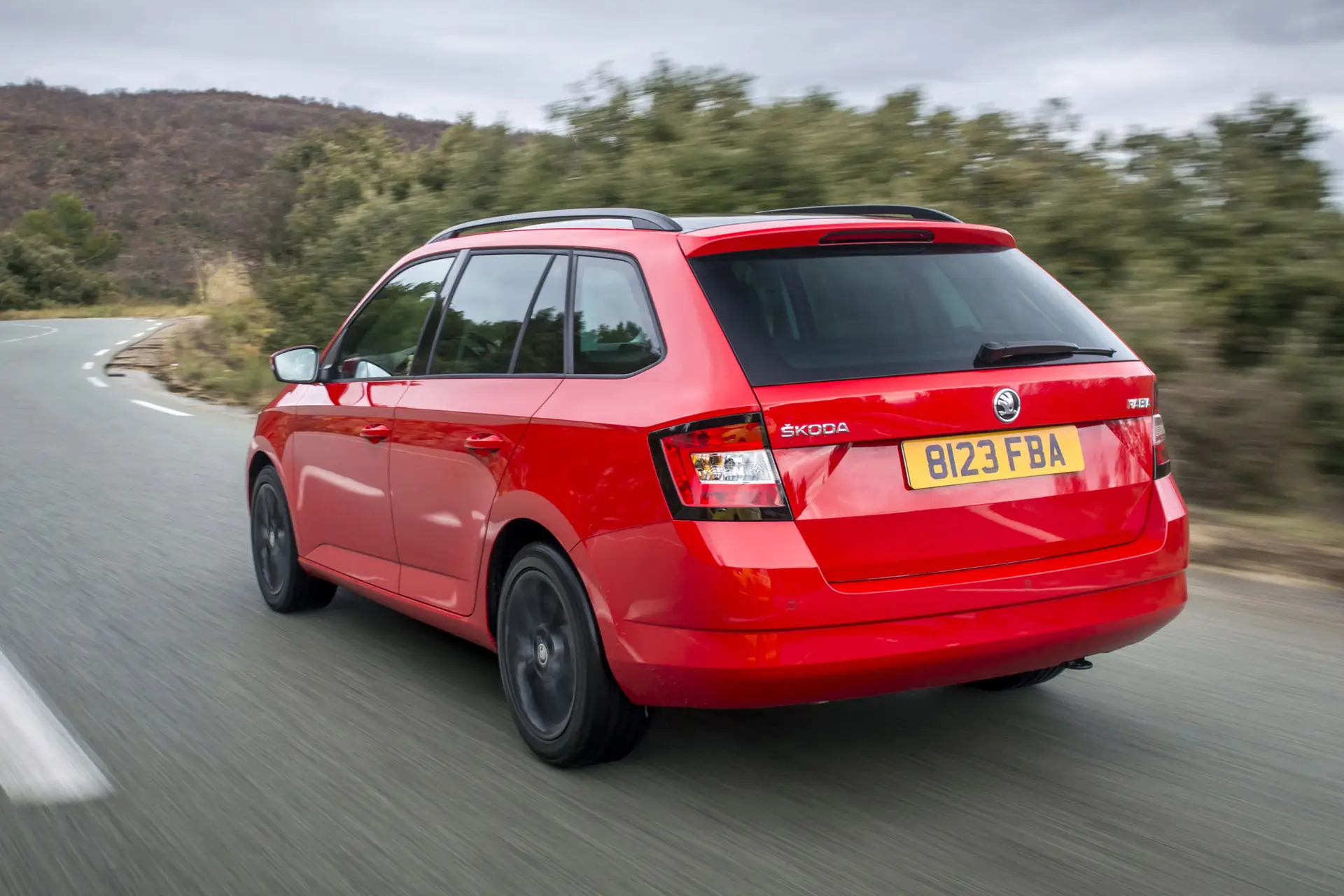
If you choose a used Skoda Fabia Estate, the best of the bunch is the 1.4 TDI 90 turbodiesel that returns a Real MPG number of 61.3mpg.
How reliable is the Skoda Fabia Estate?
The Skoda Fabia scored a solid 9.33 out of 10 for reliability in the HonestJohn.co.uk Satisfaction Index, which is decent but not exceptional given the typically high standards for Skoda vehicles.
As a brand however Skoda finished an impressive 6th place, which reflects that Skoda owners tend to be very happy with pretty much every aspect of their cars.
Insurance groups and costs
The cheapest Skoda Fabia Estate to get cover for is the 95PS S model that falls into group 8. Take the same version with the 110PS engine and it moves up to group 12.
The other 95PS trims of the Skoda Fabia Estate all reside in group 9, while all of the 110PS-powered cars are in group 12 except the Monte Carlo, which pipped into group 13.
VED car tax: What is the annual road tax on a Skoda Fabia Estate?
For cars registered after April 2017 you'll pay the standard £165, but for cars registered before that date you can benefit from very low VED rates.
All the 1.0-litre petrol options qualify for £20 per year VED, while for the 1.2-litre units it depends on the specification as to whether you pay £20 or the higher rate of £135. For the diesels, the 95PS will cost £20 and the 110PS £30 on most trim levels.
How much should you be paying for a used Skoda Fabia Estate?
"Despite going off sale in 2021, there are a handful of 2022-registered examples that are barely run in, which means a good chance of a bargain."
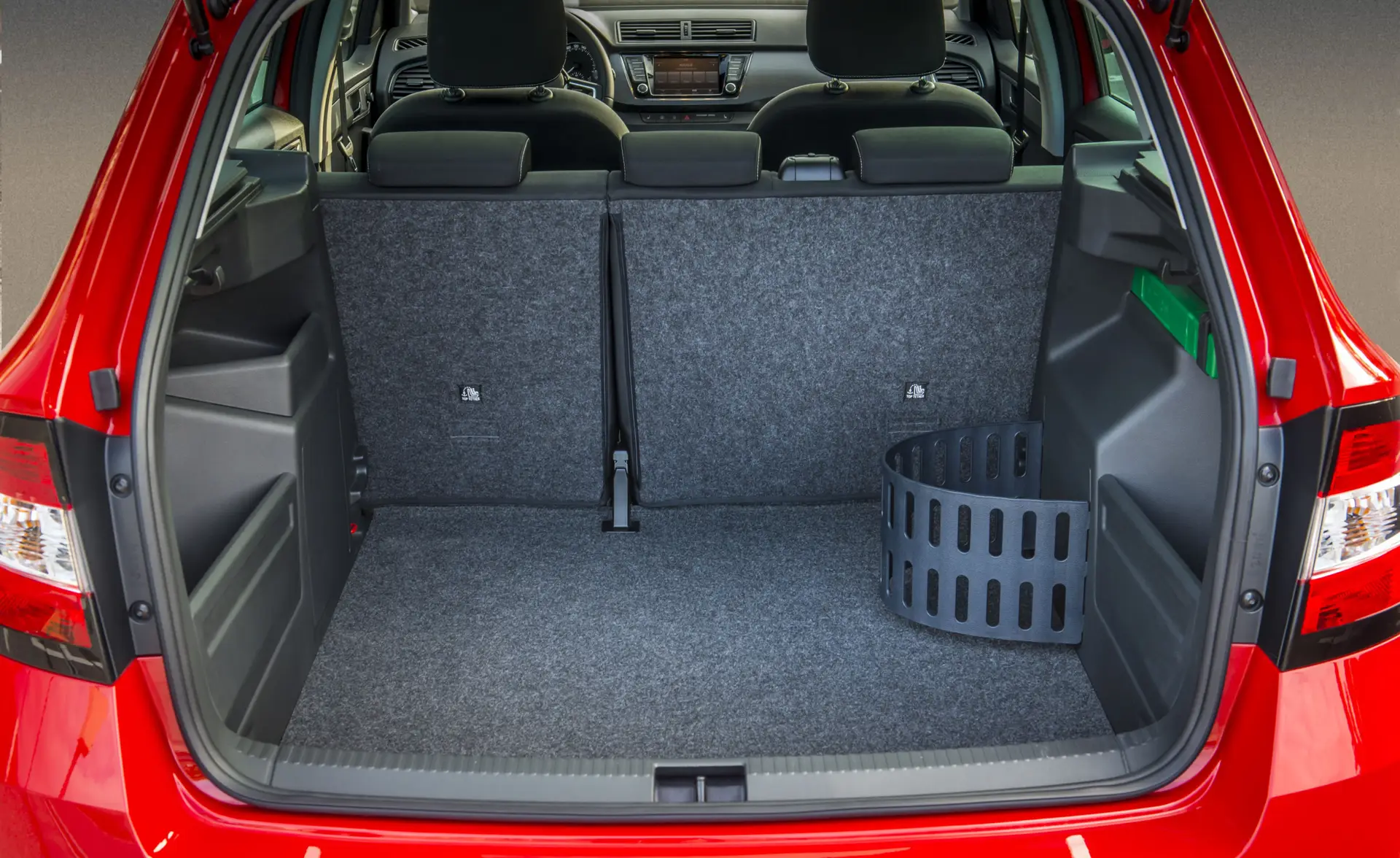
We found a 2022 1.0-litre TSI in SE spec and the DSG transmission with only 1,000 miles on the clock for £18,000, which is good for what is essentially a new car.
Go back a bit further and a facelifted 110PS SE version with 20,000 miles under its nose will cost you around £9,500. Look for a car from 2015 when this generation of Skoda Fabia Estate was launched and you will pay from around £7,000 for a car with average mileage. Depending on the exact number of miles covered and slight price variations, this will get you a choice of trim levels, so there is no need to settle for a used Skoda Fabia Estate with a basic specification.
Trim levels and standard equipment
When it was launched in 2015, Skoda offered the Skoda Fabia Estate in S, SE and SE L trims. It has not broadened that line-up, but it still begins with the Skoda Fabia Estate S that has 15-inch steel wheels, electrically adjusted and heated door mirrors and daytime running lights. Inside, it has black cloth upholstery, a 6.5-inch touchscreen that provides DAB radio, Bluetooth and USB port.
Switch to the Skoda Fabia Estate SE and you get alloy wheels, roof rails finished in black, front fog lights, and rear parking sensors. The SE also has a three-spoke steering wheel with remote buttons for the stereo. The infotainment gains six speakers and Smartlink+ for easy access to your phone and its apps. Just as vitally, you get air conditioning, an umbrella stored under the front passenger seat, and a height adjustable driver’s seat.
The Skoda Fabia Estate Colour Edition is based on the SE but has 16-inch alloy wheels, cruise control, and a roof and door mirror covers painted in black, white or silver to contrast with the body colour.
Next is the Skoda Fabia Estate SE Drive with front parking sensors and its own fabric for the seat upholstery. It also has the Amundsen touchscreen navigation system and 12 months’ internet connection from new. Choose the Skoda Fabia Estate SE L and it has different alloy wheels, cruise control, keyless ignition, and climate control. It also has satin black cloth and suede covering the seats.
At the top of the range sits the Skoda Fabia Estate Monte Carlo with its black-painted alloy wheels, Led rear lights, and sport steering wheel and front seats.
Ask the heycar experts: common questions
What is the size of the boot in the Skoda Fabia?
What happened to the Skoda Fabia diesel?
Is the Skoda Fabia a good car?
Does the Skoda Fabia use a Volkswagen engine?
Stay up to speed with great offers plus the latest car news and reviews
Keep me updated by email with the latest advice, news and offers from heycar.
By submitting you agree to our privacy policy

